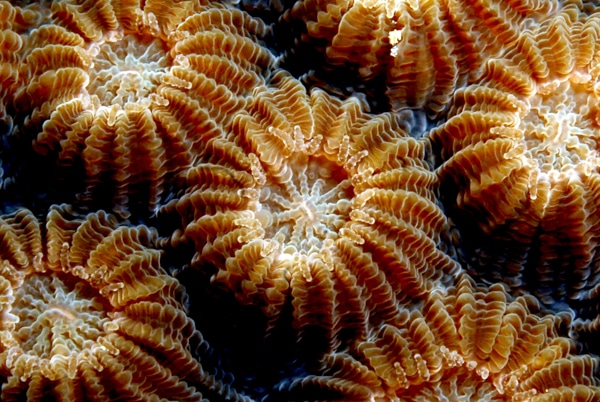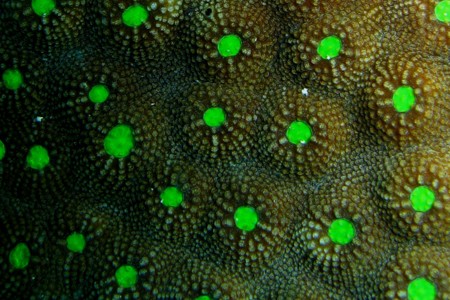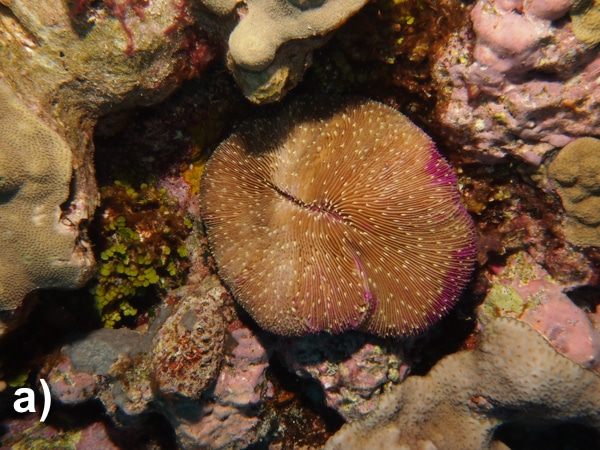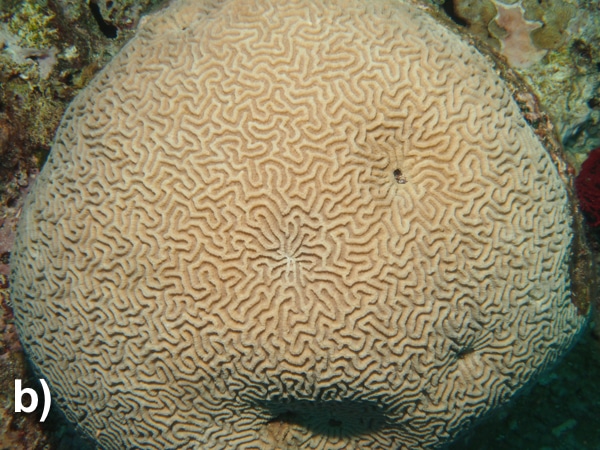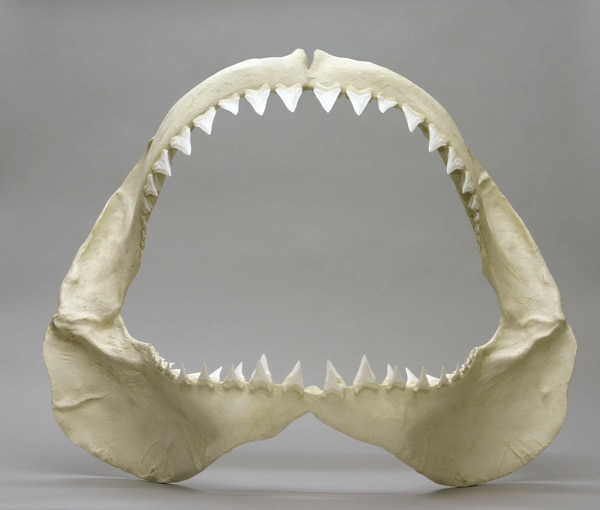Fact Friday
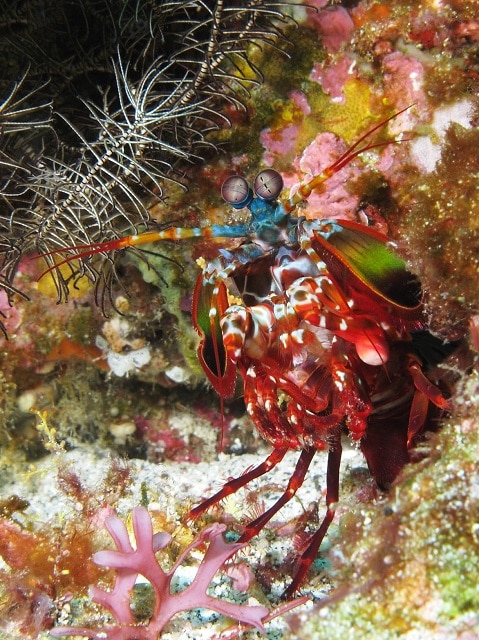
The colorful mantis shrimp is no wimp. They can box far above their weight class due to their secret weapon. They store energy in their arm which allows them to strike with the power of a 22 caliber bullet. Check out this video to see one in action.
Mantis shrimp By Alexander Vasenin [CC-BY-SA-3.0 (https://creativecommons.org/licenses/by-sa/3.0/] 15 September 2010 via Wikimedia Commons. https://commons.wikimedia.org/wiki/File:Curious_mantis_shrimp_from_Gilli_Banta_reef.JPG.
CORAL ANATOMY
All living things have a specific anatomy. Anatomy stems from the Greek words:
ana tomia
up cutting
Anatomy means to cut up. The word is defined as the study of the body including cells, tissue, organs, and systems. In order to study body structures, one must cut up the organism.
In this unit on coral anatomy, we are going to learn about some of the characteristics and structures of corals, and how they function.
We have discovered that corals are animals that reside in the Phylum Cnidaria. They are considered invertebrates. What is an invertebrate? Invertebrates are animals that do not have a spinal column or backbone.
Fun fact
Fun Fact

One of the most deadly animals in the world is classified in the Phylum Cnidaria – Chironex fleckeri or the box jellyfish. Its venom is said to be among the most deadly in the world!
Profile:
- Distribution: Waters around the Indo-Pacific and Northern Australia
- Size: Can reach 10 feet (3 meters) in length, including tentacles
- Life Span: Less than 1 year
- Diet: Plankton, small fish, invertebrates like shrimp
- Predators: Sea turtles, who are unaffected by the sting of these jellyfish.
- Other names: Sea wasps or marine stingers
- Special Traits: Unlike other jellyfish who just drift with the currents, box jellyfish can swim; they can see, as they have clusters of eyes
In Unit 2: Classification, we learned that organisms in the Phylum Cnidaria can have one of two body forms: medusa or polyp. Corals have a polyp body form (figure 3-1). Often coral polyps live in colonies where there are hundreds to thousands of polyps present. However, there are solitary corals as well.
Figure 3-1. Photos of different colonial coral polyps where each circle is an individual animal.
Photo Credits: a) Khaled Al-Shaikh; b) Andrew Bruckner; c) Ken Marks
Let’s take a look at a mushroom coral (figure 3-2a). This coral is one giant polyp that can grow up to 20 inches (50 centimeters) or more in diameter. Now let’s look at a brain coral (figure 3-2b). There are thousands of colonial polyps on this one coral. Each polyp may range from just millimeters in size to around 4 inches (10 centimeters) in diameter. Needless to say, in any given coral, polyps come in different quantities and sizes.
Figure 3-2. a) Solitary mushroom coral; b) Colonial brain coral containing hundreds of coral polyps
Photo Credit: Alexandra Dempsey
Use the interactive program to learn and explore more about the anatomy of a stony coral polyp. (*NOTE: This interactive may not work on Safari browsers. For best performance, try it on Chrome or another browser.)
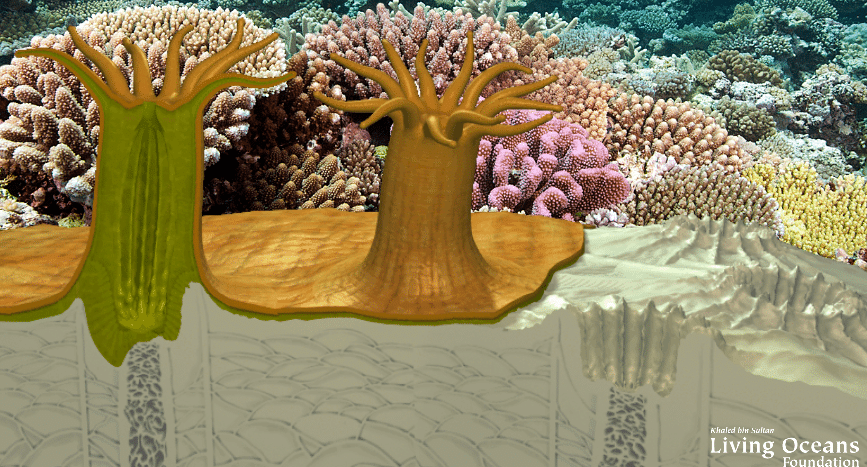
FORM FITS FUNCTION
Have you ever heard of form fits function? It means that organisms and/or their structures are designed to perform a particular function(s). Let’s take a closer look at a coral polyp. Most corals are sessile meaning they can’t move, so they can’t actively travel to find prey. Do you think it’s appropriate that tentacles fit the saying form fits function?
The answer is yes. Unless a coral polyp has an elastic, expandable mouth, it’s not going to be able to use its tiny mouth to catch prey without its tentacles.
Let’s look at another example. Describe the teeth and mouth of a great white shark. Large, serrated, sharp teeth arranged in multiple rows, and a large expandable jaw, right? This must be good for eating seaweed. WRONG! Great white sharks have all those large, serrated, sharp teeth to consume large marine mammals and fish. They are large fish and they need a lot of energy to survive. Seaweed isn’t going to cut it for these guys. Just like corals, the mouth on a great white shark follows form fits function.
Figure 3-4. Great white shark jaw with serrated teeth
ATTRIBUTION
Figure 3-4. By Bone Clones (Bone Clones) [CC BY-SA 3.0 (http://creativecommons.org/licenses/by-sa/3.0)], 18 November 2014 via Wikimedia Commons. https://commons.wikimedia.org/wiki/File%3ABC-095-Great-White-Jaw-r2-Lo.jpg.





